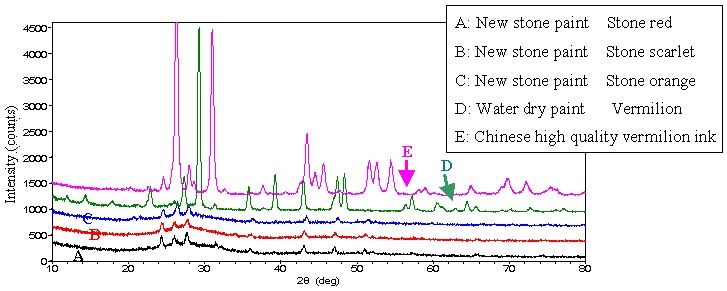Background
Arts and crafts use various coloring materials and dyes. X-ray diffraction can be used to obtain information concerning the crystallinities and the compounds present in the dyes. From the analysis of those dyes, it is possible to obtain information about how a picture was created, identify similar or related arts and crafts, and determine whether a particular item is real or a forgery.
Measurement of a small region ( ≤ 1 mm diameter ), Part II
For a highly sensitive analysis of a small (≤ 1 mm diameter) section of a dye material, Rigaku's Ultima IV multipurpose diffraction system was equipped with Cross Beam Optics (CBO), a 2 kW sealed tube X-ray source and a high-speed one dimensional detector.

Figure 1 shows the measurement results of the partial coloring in 0.5 to 1 mm diameter regions of the red, green and background portions of an earthen dish. This figure reveals that the glazing chemicals of the red and green portions are different.

